An Ode to Warrior
4There are a handful of poses that I choose to do in almost every yoga practice, and Virabhadrasana 1 (Warrior 1) is one of them. This pose holds a special place in my heart because it is incredibly diverse. To be honest, I used to hate it because I didn’t understand what it was for. As a result I had hard time arranging different parts of my body properly. I hope that you are not making the same mistake.
What makes this pose so special and so relevant for almost any situation?
First of all, just thinking of yourself as a fierce (but peaceful) warrior helps you feel stronger and more powerful, so we want to embody the pose whenever we do it.
Structurally, the classical form of the pose is used for strengthening the back, developing core stability and stretching the hip flexors. Considering our modern lifestyles, these are problem areas for many people. It also helps to stretch the chest and both sides of the torso to facilitate deeper breathing.
(Read more about proper alignment in Virabhadrasana 1)
But the true diversity of this pose lies elsewhere. In Virabhadrasana 1 a huge variety of arm adaptations is possible. Some arm movements are used to relieve tension in specific areas of the body; others affect your energy; while others facilitate a particular state of mind. So this one pose has the potential to influence your structure, your energy and your mental state – and that is pretty powerful. Here is how we do it.
1. Using specific arm adaptations helps us zoom in on specific areas of the body.
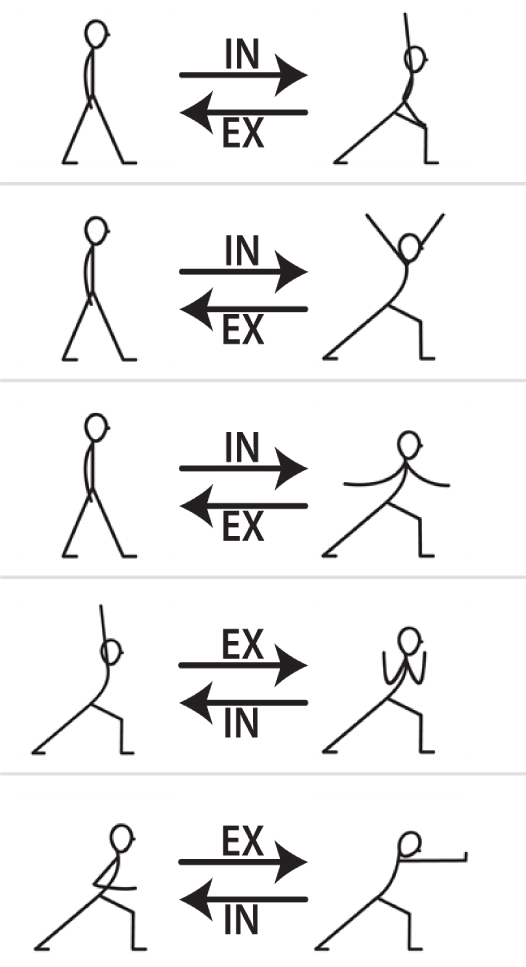
Raising one arm up emphasizes the stretch on one side of the body, especially in the area of hip flexors.
Placing the arms in the Y-shape targets the trapezius muscle and is easier for many students then holding the arms up.
Rotating the arms so that the thumbs are pointing upwards (“hitchhiker adaptations) helps relieve shoulder tension.
P
Pulling the arms down through the sides works the latissimus dorsi muscles and helps students keep the shoulders away from the ears.
“Push-pull” adaptation helps relieve tension in the neck and upper back.
2. Some arm adaptations used in combination with specific breathing patterns will have pronounced energetic effect on the system. Most often Virabhadrasana 1 is used to produce a brhmana effect. Brhmana basically means “stimulating, but not agitating”. This is accomplished by both deepening the breath (especially inhalation), and stretching the respiratory musculature to allow for deeper breathing.
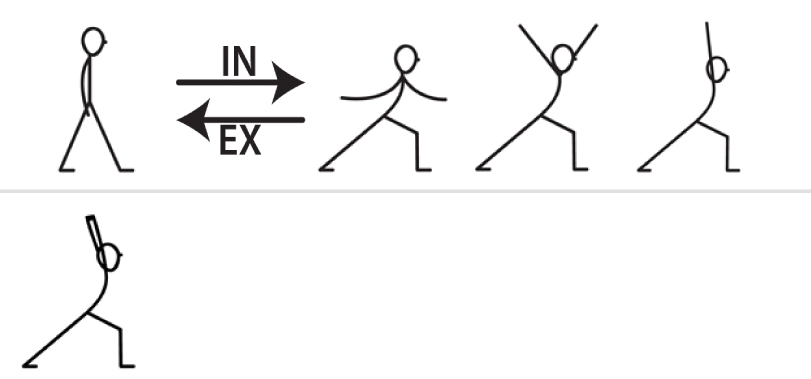 Raising the arms higher and higher with every inhalation facilitates better stretch in the chest and helps deepen the inhalation, creating a brhmana effect.
Raising the arms higher and higher with every inhalation facilitates better stretch in the chest and helps deepen the inhalation, creating a brhmana effect.
Interlacing the fingers at the top aids in stretching both sides and the front of the torso and assists in expanding the ribcage.
Those adaptations become much more effective if we add some sort of breath work to them. We can progressively deepen the inhalation (6 sec/2x, 7 sec/2x, 8sec/2x) or add retention (holding the breath after inhale) – Inhale: 6 sec, Retain: 1 sec/1x, 2 sec/1x, 3 sec/1x. Both of these techniques will promote brhmana effect.
3. Combining Warrior 1 pose with other poses can help to deepen the brhmana (stimulating) effect and apply it to specific situations.
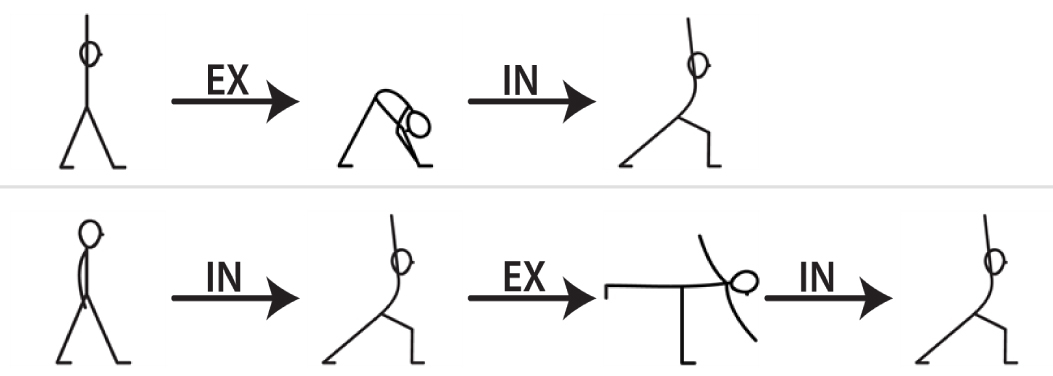 This combination creates an uplifting feeling and can be an effective strategy in working with depression.
This combination creates an uplifting feeling and can be an effective strategy in working with depression.
This combination imitates the shifting of the weight that happens during walking and helps develop better stride and balance.
4. Using symbolic hand gestures while in the pose helps to manifest an idea or facilitate a state of mind.
Manifests the idea of bringing things in and pushing things away.
Creates the sense of openness, or can be used for self-comforting (like a self-hug).
Bringing the hands to the belly, chest and head can symbolize taking in the light, new energy, knowledge, etc. on the level of the gut, heart and mind. It works best when combined with imagery (of light, flame, space, etc.)
To watch videos of all those adaptations, follow me on Instagram (ok.yoga).
I hope that you will expand your thinking when it comes to Virabhadrasana 1 and move beyond the classical version with arms over the head. It can be useful and appropriate for some students and situations, and not for others. I encourage you to experiment with different arm adaptations and see how it feels.
Of course, even with all its magical powers, we never use Virabhadrasana 1 in isolation. We support our intentions with other poses, breathing practices and visualizations to achieve a more pronounced physical, energetic, or psycho-emotional effect. On Friday we will feature a short 20-minute yoga practice that helps you bring certain things into your life and let go of others. We will use different adaptations of Virabhadrasana 1 to bring in inner peace and let go of worry; but you can also pick whatever ideas are relevant to you right now. Tune in!

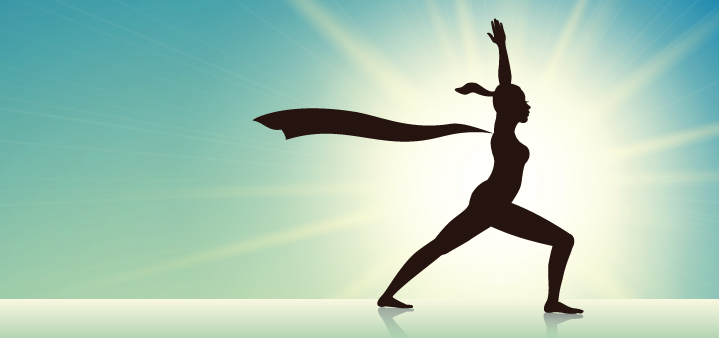
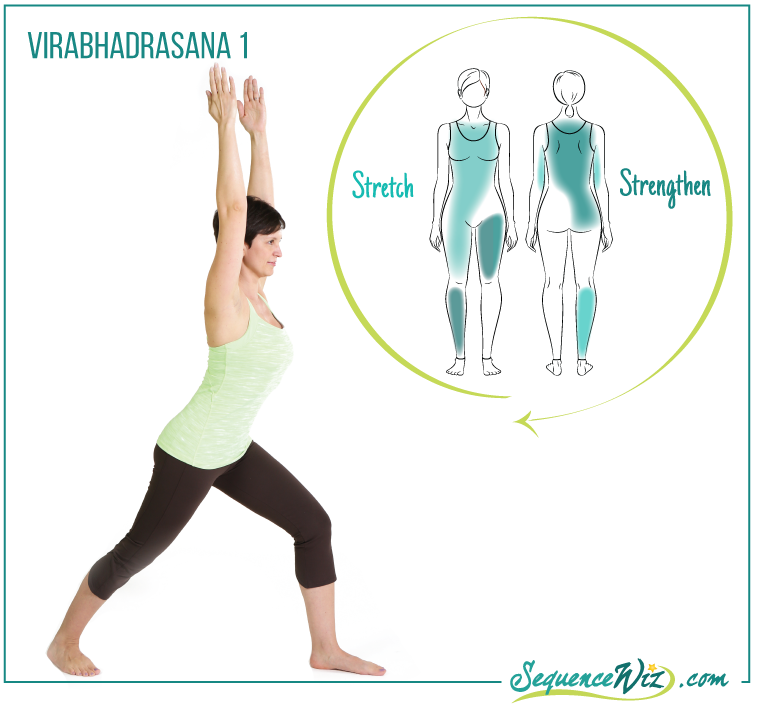
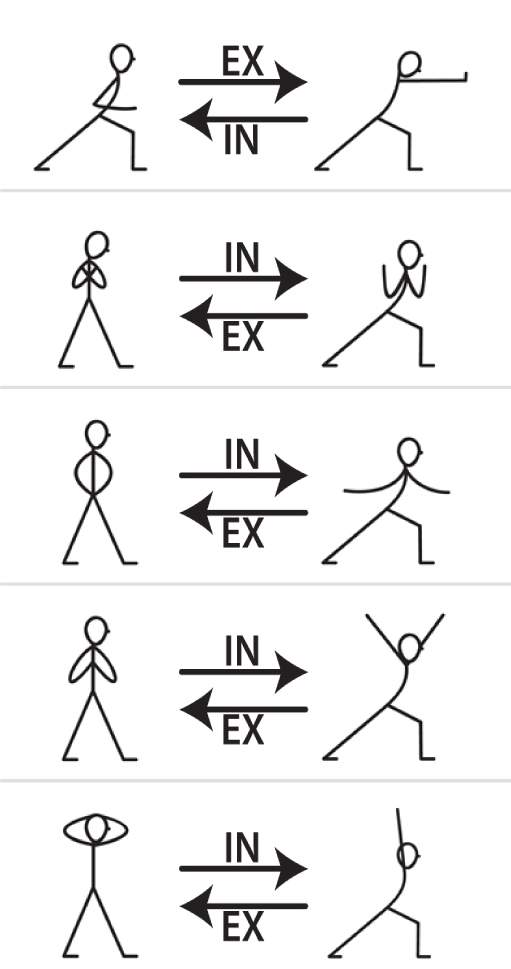
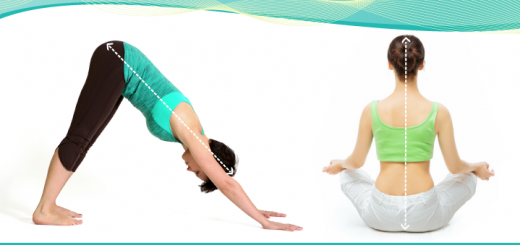

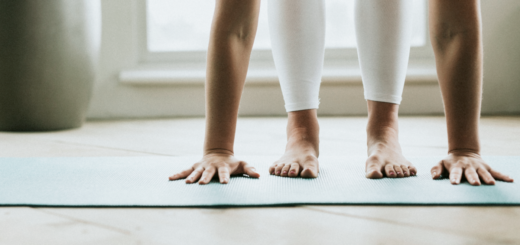
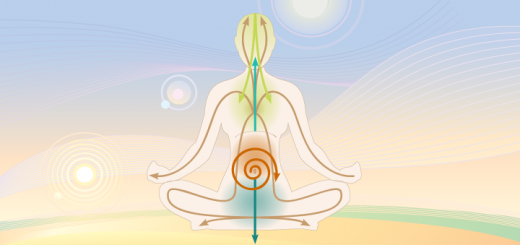















Well done again, Olga!
Virabhadrasana is one of the best known brmhana poses – as all poses are genuinely brmhana and only become langhana over time – maybe you can write an article about the ways that are possible to shift it more towards langhana to intensify the mind calming meditative effect. That could be very new to some!
Would you like to write about it Klaudia? I would love to read it (and publish it)!
Oh, I would love to! But right now I am in the middle of our move so it has to wait at least until autumn. Maybe you pick that up for your are such a brilliant writer!
Thank you, that’s nice of you to say 🙂 Got started on your move already? Good luck, I can imagine what a big production this is 🙂 Let’s revisit the topic of you writing for me once you get settled 🙂